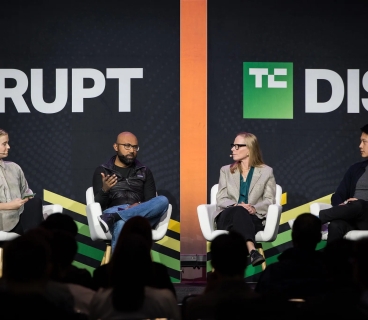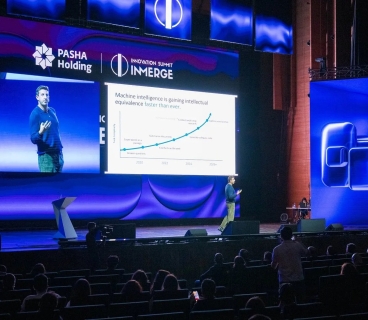Open Source AI is now central to organizations’ technology strategies, according to a global survey of more than 700 technology leaders and engineers. The study, conducted by McKinsey, the Mozilla Foundation, and the Patrick J. McGovern Foundation, found that 76% of respondents plan to increase their use of open source AI technologies in their organizations in the coming years.
This trend is driven not only by technological innovation but also by changing geopolitical realities. Open source is no longer just a technical choice — it has become a strategic choice for sovereignty, trust, and economic independence.
New directions of innovation: Edge and Reasoning models
The survey results show that open source AI is mainly driving innovation in two directions:
Privacy-oriented Edge (AI-based, which analyzes and processes user data locally without transmitting it to a central server, thus increasing privacy and speed) applications are built on Small Language Models (SLMs), which provide local processing of data, providing low latency and high security.
Reasoning Models – These models, which have more effective inference capabilities than classic LLMs, accelerate decision-making processes and provide enterprises with more agile AI systems.
Geopolitical Realities and the Rise of Open Source on the Political Agenda
Open source AI technologies are emerging as a global alternative to reduce the scope of influence of closed models, especially from giants such as the US and China. At the Global AI Action Summit in Paris, 58 countries – representing half of the world’s population – pledged their commitment to open, ethical and inclusive AI development. As Vilas S. Dhar, President of the Patrick J. McGovern Foundation, puts it: “The future of AI will lie in the hands of ecosystems, not empires.” In this context, the Latam GPT model created for Latin America is strategically important. Adapted to the historical and cultural context of the region, this model plays a democratizing role by giving states independent access to AI technologies. In Europe, open source is seen as a key tool for technological sovereignty. “In an era where power is concentrated in the hands of non-European companies, open technologies are a game-changer for public policy,” says Yann Lechelle, CEO of Probabl. The European Commission’s support for open science, open data, open source code, open model weights and open standards expands economic and technological maneuverability.
Giant Companies Are Also Moving to Open Source
Google (Gemma) and Meta (LLaMA), leaders in the field of artificial intelligence, are also among the major players moving towards open source. The giants have invested heavily in this field.
What are the main reasons for this move?
Gaining an edge in market competition: Open source models are adopted more quickly by individual and corporate users. Because they are easy to use, can be changed, and the cost of integration is low.
Creating rapid innovation: In open source systems, thousands of developers and researchers work together, ensuring much faster development. This means more agile and large-scale progress than a single company can make.
Creating trust and transparency: Public trust issues are increasing against closed systems (such as OpenAI GPT). Open models are seen as an example of ethical and transparent technology because they show how it works.
Inclusive and ecosystem-based approach: Meta and Google want artificial intelligence to contribute to the development of the whole world, not just their own. This approach also allows research centers, small companies, startups, and individual engineers to participate in this ecosystem.
Dhar emphasizes the idea: “The superior AI model of the future will be built on shared innovation and open source, rather than technical power.”
In other words, staying ahead in technology will no longer be possible only by having a powerful computer and a large team, but by sharing knowledge and jointly creating value.
Small, but Powerful Models – A Smarter and More Effective Approach
In the field of artificial intelligence, large models (LLMs) are gradually giving way to smaller and more purposeful models. These models are called Small Language Models – SLMs.
The main advantages of these models:
They work comfortably even on devices with low computing power.
They process and respond to information faster.
They are cheaper to build and operate.
Who works on these models?
Large cloud platforms such as Amazon Web Services (AWS), Google Cloud, and Microsoft Azure offer these models in a form adapted to industries. For example:
Models that process patient data in the healthcare field,
Models that analyze documents in the legal field,
Chatbots that respond quickly for customer support.
There are also risks
As opposed to closed systems such as OpenAI's O1 model, Chinese companies DeepS
Open source alternatives such as eek-R1 and Alibaba are emerging. Platforms such as Perplexity and HuggingFace are also dynamically introducing new models in this area. Despite all the advantages, open source AI systems come with certain risks:
Cybersecurity – 62%
Regulatory compliance – 54%
Intellectual property risk – 50%
Despite these risks, organizations are trying to manage the integration of open source systems with stronger security and compliance strategies. Mozilla President Mark Surman sums up this vision: “Open source AI is not just an alternative of the future – it will be the foundation of a competitive and creative economy. If these technologies are accessible to everyone in a modular way, like Lego, every organization will be able to build an AI system that suits its purpose.”












